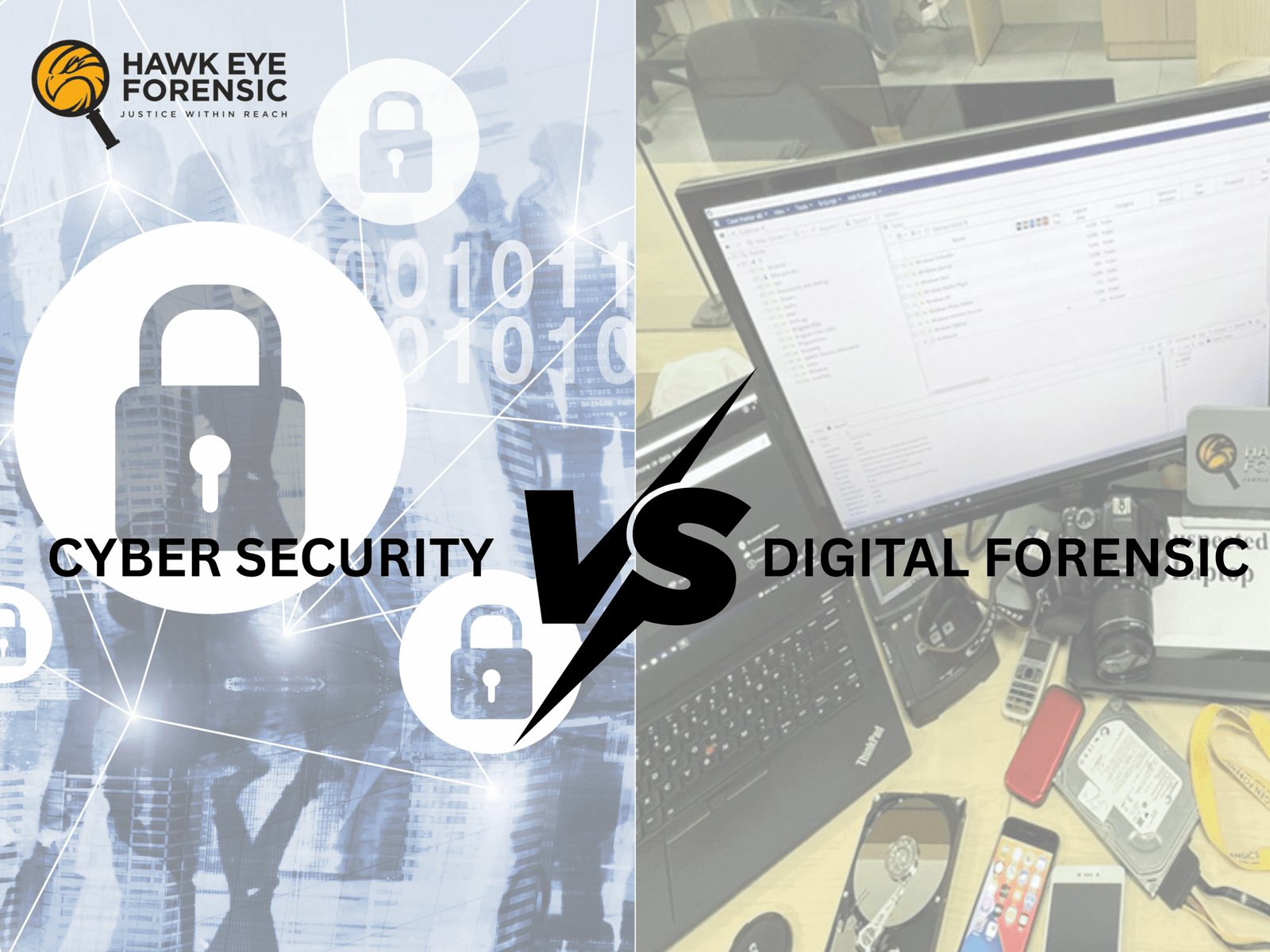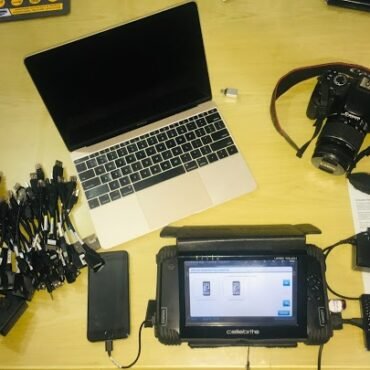Cybersecurity and Digital Forensics — What’s the Difference?
In today’s technology-driven world, cyber threats and digital crimes are rising faster than ever. Students often ask: “What is the difference between cybersecurity and digital forensics?”
While both fields deal with cyber threats, their purpose, scope, and job roles are very different. If you are planning a career, understanding this difference is the first step toward choosing the right path.
What Is Cybersecurity?
Cybersecurity focuses on protecting systems, networks, and data from attacks.
A cybersecurity professional works before an incident happens to stop hackers, malware, or intruders.
Key Responsibilities in Cybersecurity
-
Identifying security vulnerabilities
-
Monitoring network traffic for suspicious activities
-
Implementing firewalls, encryption, and authentication
-
Supporting secure infrastructure and cloud environments
-
Preventing cyberattacks like phishing, ransomware, and DDoS
Goal of Cybersecurity:
To prevent a cyberattack from happening.
Who Should Choose Cybersecurity?
Students interested in networking, system administration, threat analysis, and preventive security should choose this field.
What Is Digital Forensics?
Digital forensics comes into action after a cyber incident has occurred.
It focuses on collecting, examining, and analyzing digital evidence to understand what happened, how it happened, and who is responsible.
Key Responsibilities in Digital Forensics
-
Recovering deleted or hidden data
-
Creating forensic images of devices
-
Analyzing logs, emails, mobile phones, hard drives, or cloud data
-
Preserving evidence in a legally admissible manner
-
Preparing investigation reports for court
Goal of Digital Forensics:
To investigate a cyber incident and present the truth using digital evidence.
Who Should Choose Digital Forensics?
Students interested in investigation, analytical thinking, evidence collection, and working closely with law enforcement should consider this domain.
Cybersecurity vs Digital Forensics — Major Differences
| Aspect |
Cybersecurity |
Digital Forensics |
| Focus |
Prevention of attacks |
Investigation after attacks |
| Work Style |
Continuous monitoring & defense |
Evidence recovery & analysis |
| Primary Goal |
Protect systems & data |
Find the source and method of attack |
| When It Works |
Before and during a cyberattack |
After a cyberattack |
| Tools Used |
Firewalls, SIEM, IDS/IPS, encryption |
EnCase, FTK, Cellebrite, Autopsy |
| Output |
Secure environment |
Forensic report & legal evidence |
| Typical Employers |
IT companies, SOCs, banks, MNCs |
Law enforcement, cyber labs, courts |
How Cybersecurity and Digital Forensics Work Together
Even though both fields are different, they complement each other.
-
Cybersecurity prevents the attack.
-
Digital forensics investigates when prevention fails.
-
Together, they strengthen an organization’s overall cyber resilience.
For example:
If a ransomware attack occurs, the cybersecurity team stops further spread, while the digital forensic experts check how the attack entered, which files were affected, and who may be behind it.
Career Opportunities in Both Fields
Cybersecurity Roles:
Digital Forensic Roles:
Both fields offer high demand, excellent salaries, and global opportunities.
Which Field Should You Choose?
Ask yourself these questions:
Choose Cybersecurity if you like:
✔ Protecting systems
✔ Working in a SOC
✔ Threat detection
✔ Technical and networking tools
✔ Preventing cyberattacks
Choose Digital Forensics if you like:
✔ Investigating cases
✔ Recovering deleted data
✔ Working with law enforcement
✔ Analyzing devices and logs
✔ Presenting evidence in court
Both are rewarding; your choice depends on your interest and career goals.
Final Thoughts
Cybersecurity and digital forensics are two powerful domains of the digital world.
One protects, the other investigates—but both are essential for fighting cybercrime.
For students planning a future in technology, understanding these fields opens doors to some of the most exciting and impactful careers today.





Post comments (0)